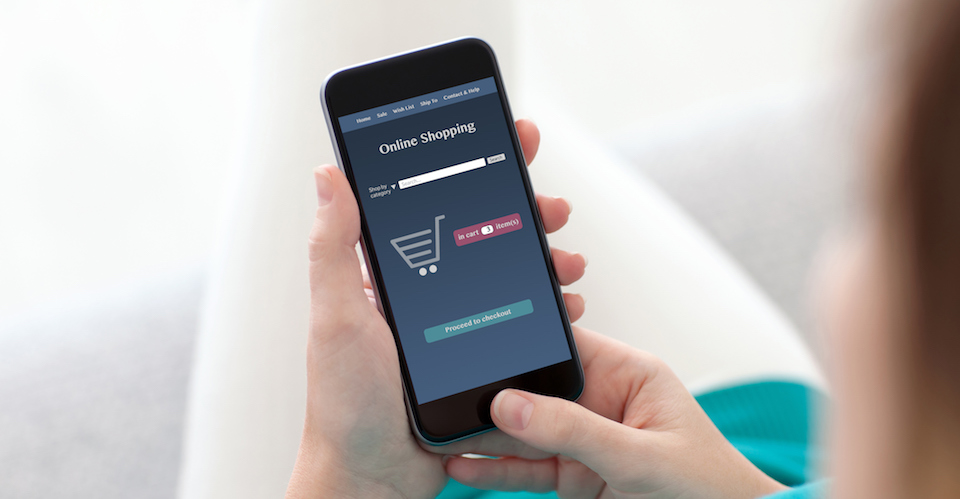
 Go to homepage
Go to homepage
Mobile phones have become ubiquitous in our society. According to a recent Pew Research Center survey, 95 percent of Americans now own a cellphone of some kind. And 77 percent own smartphones, allowing them to stay connected to the internet virtually anytime, anywhere.
Smartphone ownership has more than doubled since Pew first surveyed the topic in 2011, and the rapid adoption of digital technology has dramatically changed the way we shop. People can now purchase products online through an ever-growing number of branded mobile apps while waiting for a bus or standing in line. Shopping for groceries, which used to take hours, can now be accomplished in 20 minutes.
That has led some companies to mistakenly believe that a mobile app is the key to success. However, my research shows that companies that place all of their eggs in the mobile app basket are likely to come up short when their customers check out.
Along with colleagues at Northwestern University, I looked at three years of data on consumer engagement and purchasing behavior from an online grocer. We found that while a well-designed and user-friendly mobile app is important, it is just one part of a multi-channel digital strategy that increases the odds of delivering a win-win for consumers and companies alike.
As a marketing researcher, I’m interested in how visual platforms can influence communication between companies and consumers. In our research published in the Journal of Retailing, my colleagues and I found that on average, shoppers who adopt mobile shopping are more loyal to the retailer, as they purchase items more frequently and place more items in their baskets when they do shop than those who only buy on their personal computer.
So there really is a positive correlation between mobile app adoption and better customers, as companies would look at it. However, shoppers who use multiple digital channels—a personal computer plus a tablet plus a smartphone—buy more frequently, place larger orders, and have a higher “lifetime value” to businesses than those who just buy through a mobile app.
Our examination of the data shows that people use different buying strategies depending on the device they use. People who make purchases through a mobile app tend to be more risk-averse. They tend to buy familiar products, ones they have bought before, with a shorter consumption time made by a well-known manufacturer.
So there isn’t a one-size-fits-all strategy for mobile app success. If your company is a prominent player in its market, then by all means, go ahead and make a big push into mobile sales. But if you are a less-established player, and especially if you’re launching a new product, perhaps it’s prudent to look at all possible digital channels.
One caveat I would add is that the data we relied on for our research came from 2011-13. I would love to follow up to see whether, as mobile devices have improved, consumers have grown less risk-averse when they use them to make purchases.

Companies that decide to dive into the highly competitive mobile app world should be aware that it’s a two-edged sword. The app gives, but it also takes. Our research found that when customers disengage with a company’s app, their overall spending decreases.
So digital engagement and a customer’s actual transactional engagement are correlated. That means if you go into mobile, make sure you do it well. Coming out with an app that isn’t well-designed, that runs slowly or is cluttered with extraneous features, can cost you customers for years to come.
Consider: 79 percent of consumers said they would retry a failing app only once or twice if it does not work properly during their first try. That means it’s critical to get it right the first time.
How do you do that?
First and foremost, a firm should have a clear goal what they want to achieve with their app. Too many apps are cluttered with different functionalities. When it comes to app design, less really is more. And that “less” part has to be laser focused on what you’re trying to do, what you’re trying to deliver.
If your goal is to make shopping for groceries easier, make sure your app makes it easy for people to browse for items. Letting users review products is often a good way to engage them online, but it probably is not as important for a grocery shopping app. Figure out what is the key purpose that you want to achieve with your app.
Also bear in mind that app discovery has become a major challenge. The glut of apps has made it increasingly difficult for consumers to find any particular one. That’s why it’s important to make sure your website is truly mobile-optimized—one that renders as well on a smaller, narrower, vertical smartphone screen as it does on the larger horizontal computer screen.
People tend to download an app if they expect to have a long-term relation with you. Your website often is the first encounter a potential customer has with your brand on a mobile platform. If your website doesn’t work right on a smartphone, why should they trust that your app will?
Remember, adding a mobile app to a multi-channel digital sales approach is good for companies and consumers. Providing customers with multiple options to engage and purchase products is an investment that will pay off in loyal customers who shop more, buy more, and spend more.